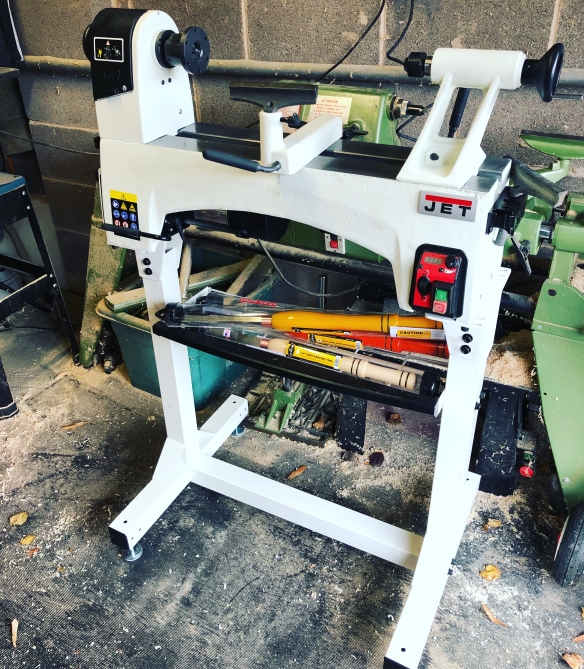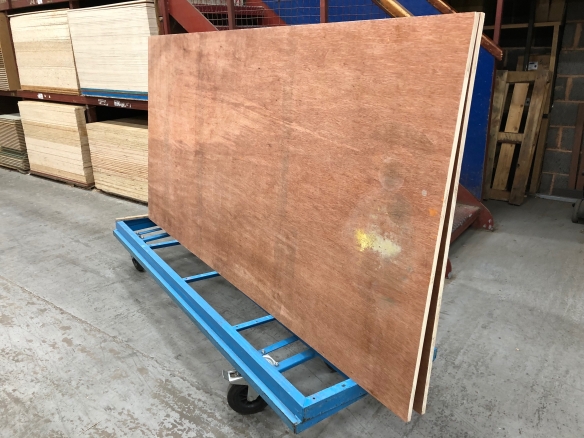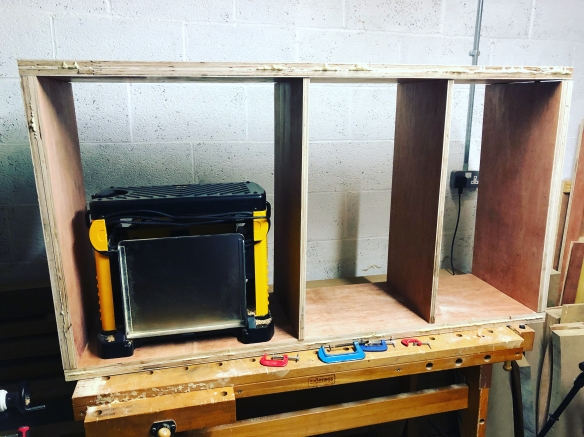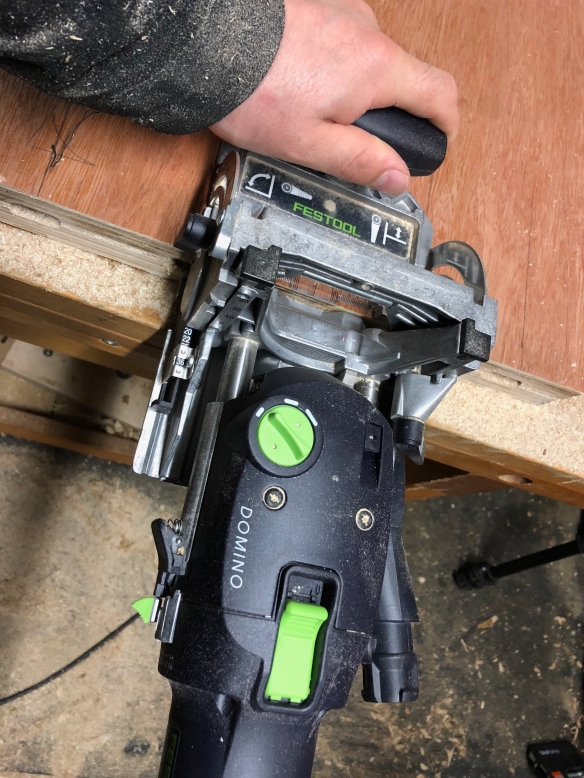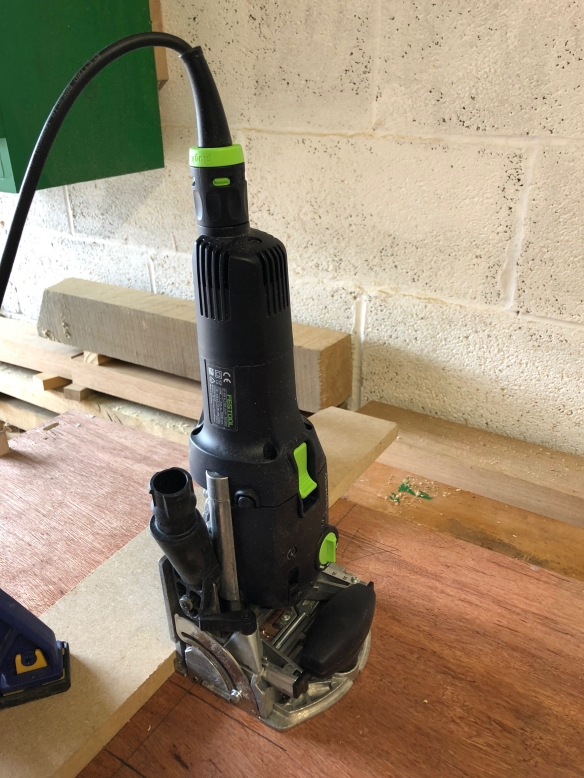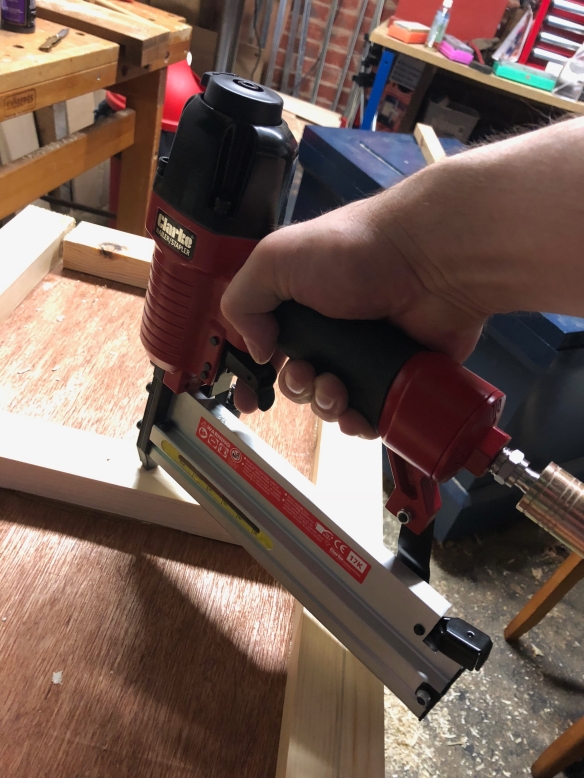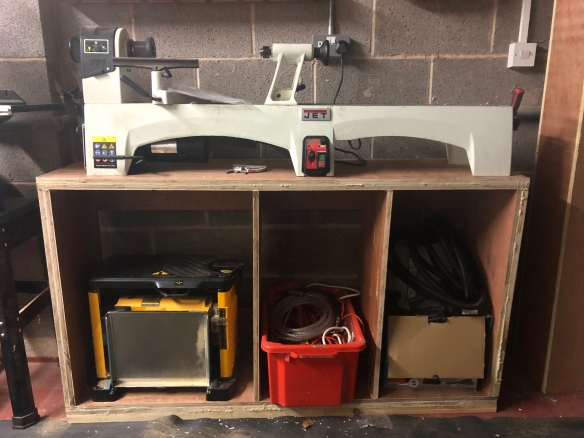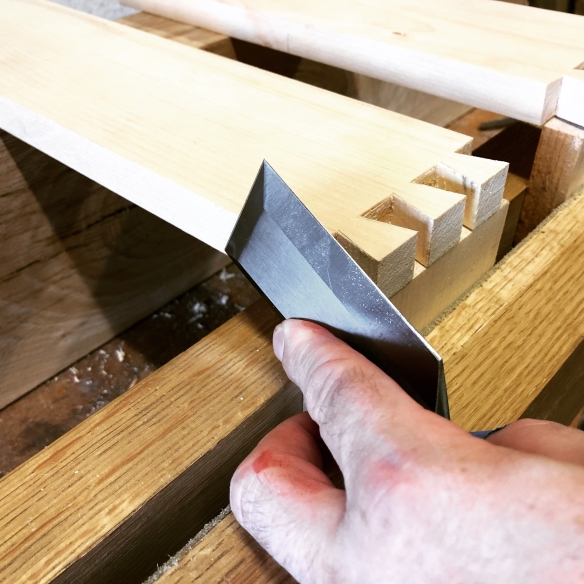
A wide chisel helps to locate the tail board for transfer to the pin board
I thought I would get some dovetail practice in before I fly out for the Kentucky Dovetail Death March ™ later on this month, and this presented a perfect opportunity to start making drawers for the express lathe stand. The inclusion of drawers was a key part of the original design for the lathe stand, as not only will drawers provide a home for lathe tools and other small items (a workshop can never have too much storage!), but using the lathe stand as a storage unit also adds mass, which keeps things stable when turning larger workpieces. Originally I had intended to domino drawers out of ply – a construction method that is quick, efficient and perfect for a workshop storage unit. But as I wanted to do some dovetailing in preparation for my trip, it made sense to dovetail this round of drawers at the very least.
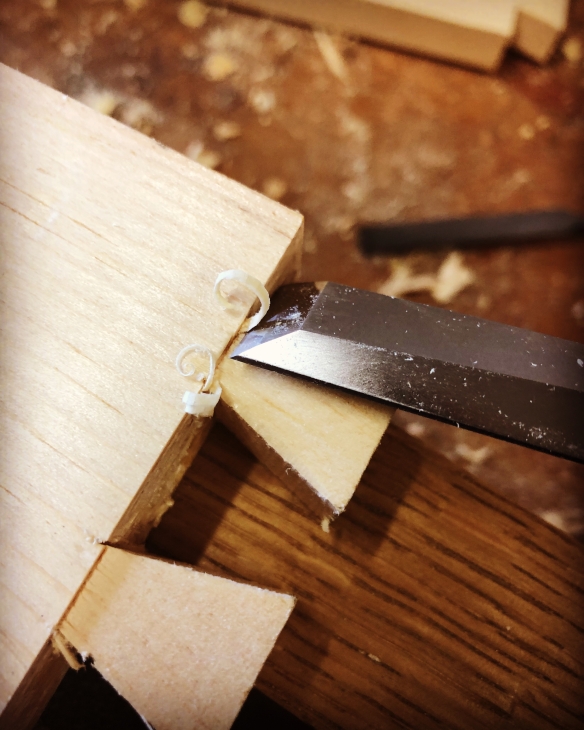
Chamfering the leading edges of the tails for ease of assembly
So far I’ve made three drawers of varying depth and tail spacing – changing the dovetail spacing for each drawer offered some good practice after a few months of cutting only bench-sized joinery. One drawer will hold my lathe jaws, allen keys, and smaller tools which become indespensible when you use a lathe. The deepest drawer will hold my scorp, splitting wedges, and a few other chair making tools which need a separate home to my Anarchist’s Tool Chest. The final drawer is much shallower than the others, and will house story sticks and patterns accumulated from past projects.

A sharp block plane is a wonderful thing for cleaning up joinery
I cut the dovetails the same way I’ve cut every dovetail joint (and the way we will be doing it next week). After a year of mainly working on bench-sized oak timber, the 3/4″ pine for the drawers worked ike a dream, and it was nice to work at a different scale and tolerance. Once the glue had dried, I cleaned up the dovetails with a sharp block plane to see how the joints had turned out and was quite pleased. Once I am back from Kentucky I will clean up the rest of the surfaces with a smoothing plane, fit ply bottoms to each drawer, and give them a lick of paint (probably the green I used for the saw cabinet). With some clutter out of the way, it will then be back to the Roubo bench build. The autumn promises some enjoyable woodwork!
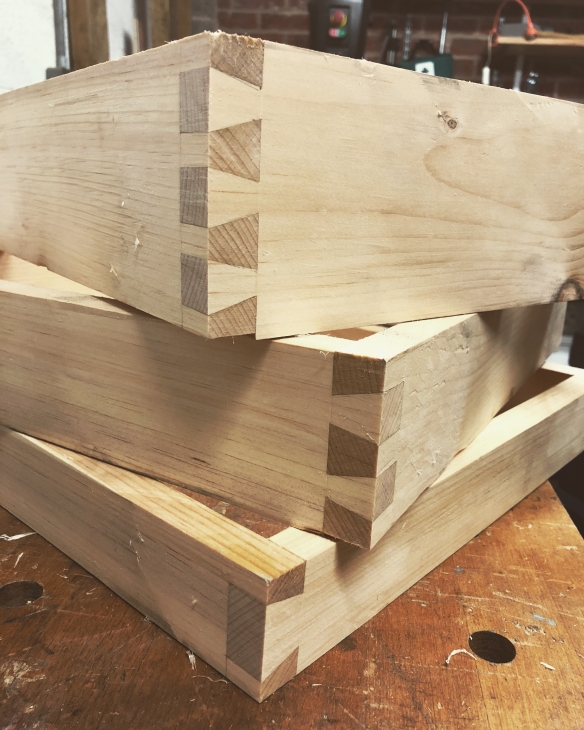
Three drawers. They need a final clean up, but the joinery is strong and these will provide plenty of storage in the lathe sand
On a separate note, I will be at the Lie-Nielsen event at the Lost Art Press storefront on Saturday – if anyone finds themselves there, then do say hi (I’ll be the jetlaged Englishman).

